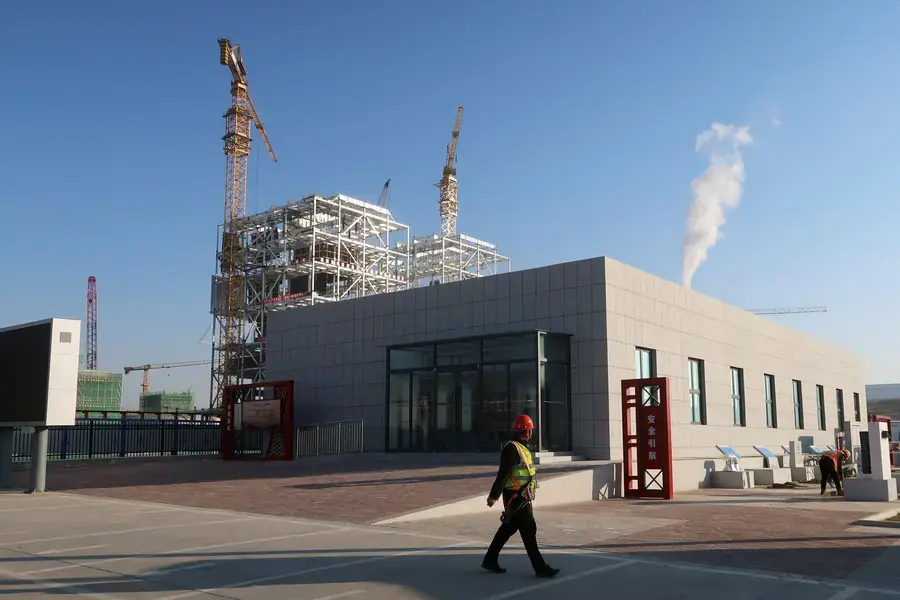China’s Battle Against Air Pollution: An Update

Nearly four years have passed since the publication of my book, Toxic Politics: China's Environmental Health Crisis and Its Challenge to the Chinese State. In it, I argue that while China faced an unprecedented environmental health crisis, government leaders displayed strong autonomy in policymaking and the ability to transmit pressures down to the lowest hierarchy levels to get things done. This was evidenced in the anti-pollution campaign launched in 2013, which focused on controlling PM2.5—deemed the most harmful particulate matter. According to the Global Burden of Disease study, ambient PM2.5 pollution was responsible for approximately 1.4 million premature deaths in China in 2019. Thanks to the campaign, the average PM2.5 concentration dropped by 50 percent, from 72 micrograms per cubic meter (μg/m³) in 2013 to 36 μg/m³ in 2019.
China seems to have continued improving air quality during the Covid era (2020-2022). According to the Ministry of Ecology and Environment, the average annual concentration of PM2.5 in 339 major Chinese cities fell to 29 μg/m³ in 2022, with the average number of days classified as having good air quality reaching 316. Blue skies are indeed back, a fact evident to both residents and visitors in the country. Chinese ambassador to the United States Xie Feng emphasized this achievement in a speech at Harvard earlier this week:
Ten years ago, at the APEC welcome banquet, President Xi Jinping predicted that Beijing would enjoy lasting blue skies. Today, the temporary “APEC blue” has transformed into the enduring “Beijing blue” and “China blue.” China now boasts the fastest air quality improvement worldwide.
More on:
In light of the significant increase in PM2.5 pollution in many regions of the world, the decline in global pollution levels can be attributed entirely to China’s success in steeply reducing pollution, according to a University of Chicago study. If these reductions are sustained, the study forecasts a potential increase of 2.2 years in average life expectancy for China.
That said, it is premature to celebrate the end of China’s war against pollution. The PM2.5 concentration of 29 μg/m³ still falls short of the WHO standard of 5 μg/m³. To put this into perspective, the most polluted city in North America for PM2.5 is Coffeyville, Kansas, with an average annual concentration of 19 μg/m³. More concerning is that after a decade of decline since 2013, the overall PM2.5 levels in China rebounded for the first time in 2023. This increase in PM2.5 levels occurred in 80 percent of China’s provincial capitals, including Beijing.
Meanwhile, there is no indication that the government is reversing the increasing trend of other pollutants, such as ozone (O₃). Surface ozone is a significant air pollutant that exacerbates respiratory conditions like asthma and chronic obstructive pulmonary disease, and increases the risk of infections and cardiovascular diseases. In the absence of a multi-pollutant emission reduction strategy that coordinates the control of both PM2.5 and O₃ pollution, the density of O3 tends to rise as PM2.5 concentrations fall. Prior to the pandemic, there had been a significant increase in O3 concentration in China, contributing to 90.1 percent of the rise in ozone-related mortality from 2013 to 2019. The problem has persisted, with the average ozone concentration in monitored cities reaching 145 μg/m³ in 2022, up by 5.8 percent from 2021.
While unfavorable weather conditions may play a role, there is clearly a diminishing returns problem in the authoritarian approach to pollution control. Since 2018, the annual reduction in PM2.5 levels has slowed. There was no change in the average annual PM2.5 levels from 2018 to 2019, and only a slight decrease during 2020-22, largely due to the reduced economic activities. The diminishing returns problem became more apparent in 2023. Among the provincial capital cities in China, nearly 50 percent that had PM2.5 levels above the national standard of 35 μg/m³ showed improved air quality compared to the previous year. In contrast, every city that met the national standard experienced a rise in PM2.5 concentrations.
A major concern is the increasing dependency on fossil fuels. Before the pandemic, China had successfully reduced coal’s share in its energy mix from 67.4 percent in 2013 to 57.7 percent in 2019. However, following widespread electricity shortages in 2021, China authorized 218 GW of new coal power within just two years—enough to power all of Brazil. By 2023, China’s coal production reached a record 4.66 billion metric tons, up 2.9 percent from the previous year. In the meantime, China’s coal imports also surged to a record 474.42 million tons, marking a 61.8 percent increase year-over-year. Consequently, coal’s share of China’s energy mix returned to the 2017 level of 60 percent. In the last quarter of 2023, China’s thermal coal power generation climbed 7.3 percent year-over-year to 1,584 TWh, accounting for nearly 70 percent of the nation’s electricity generation. This escalating reliance on fossil fuels significantly contributes to air pollution. Studies show that in regions failing to meet PM2.5 standards, coal production and thermal power generation increased by 4.4 percent and 4.3 percent, respectively, compared to the previous year. The growing dependence on coal power not only thwarts China’s pollution control efforts but also jeopardizes its goal to peak climate-warming emissions by 2030.
More on:
 Online Store
Online Store